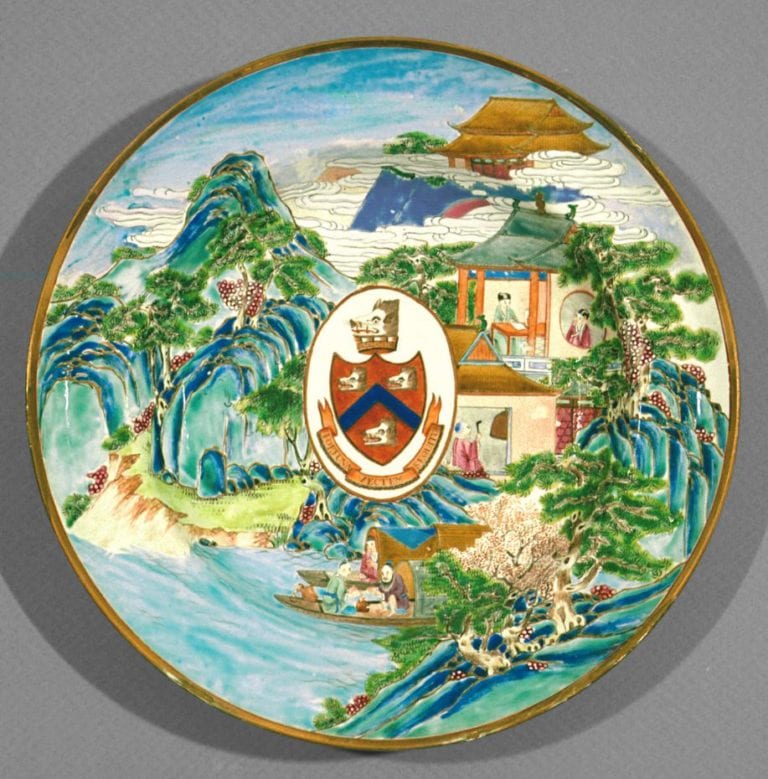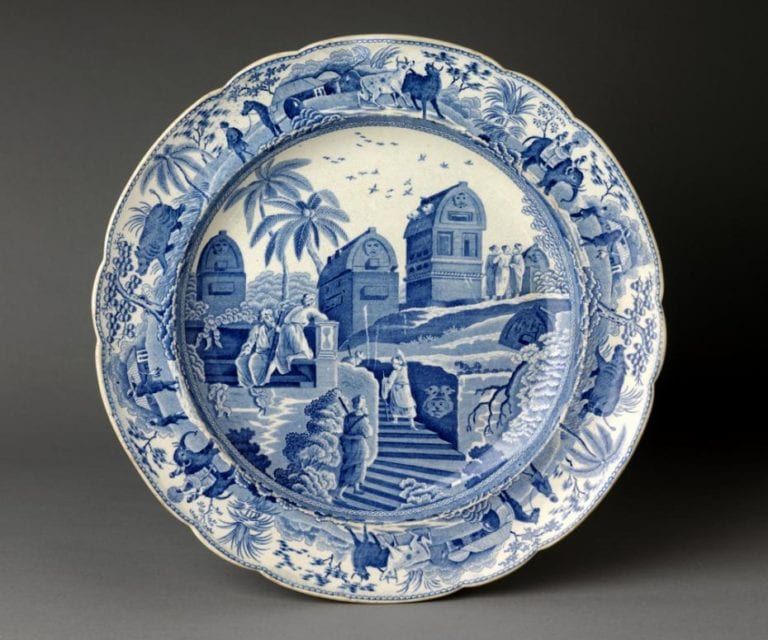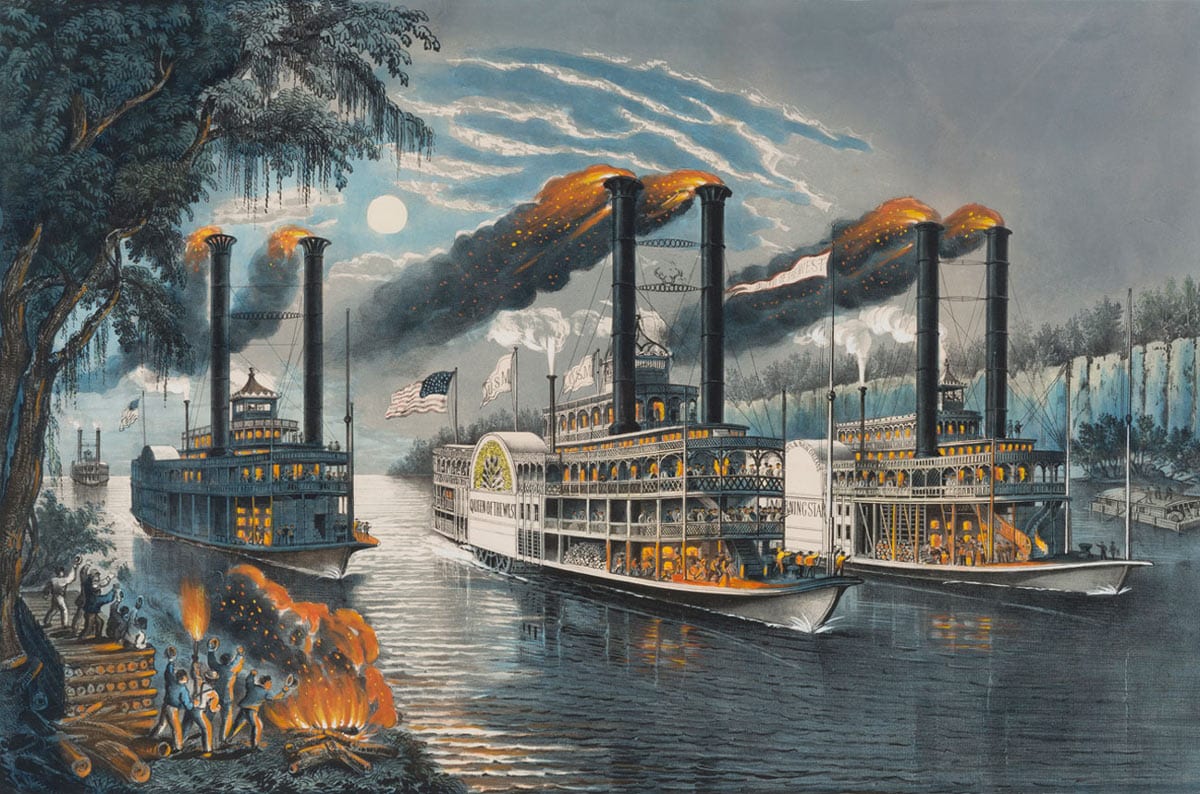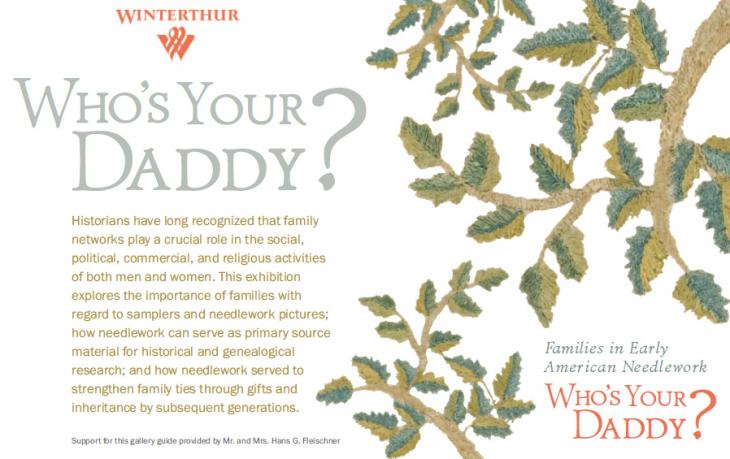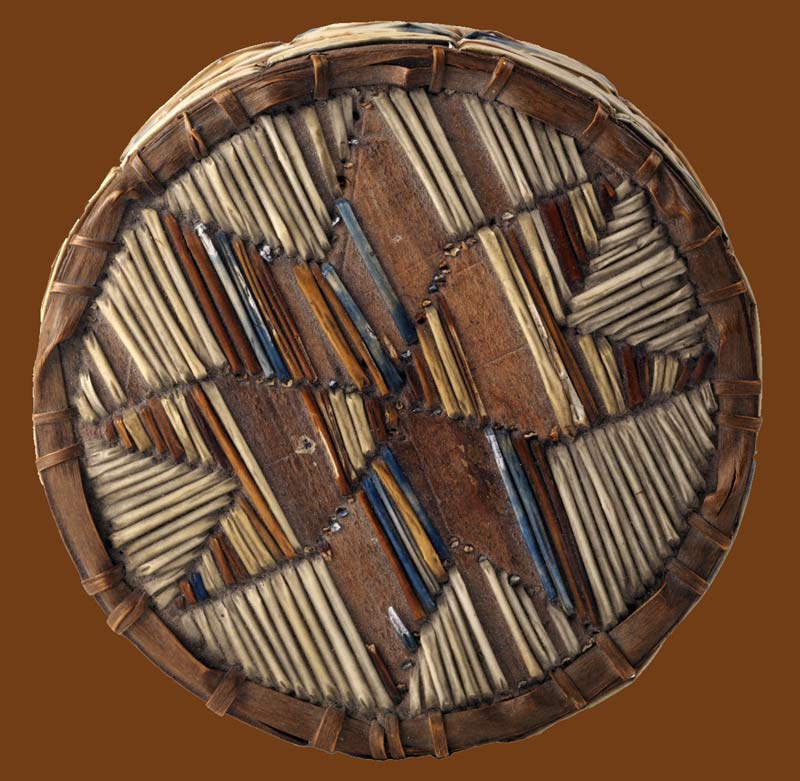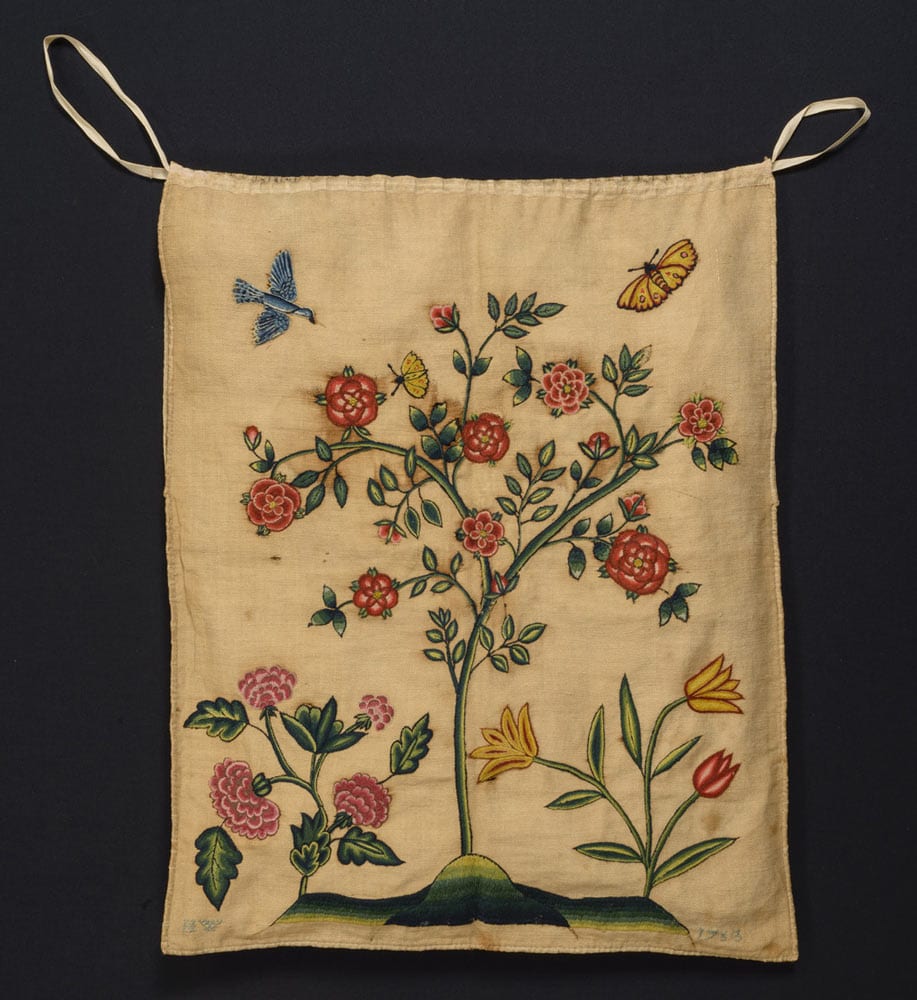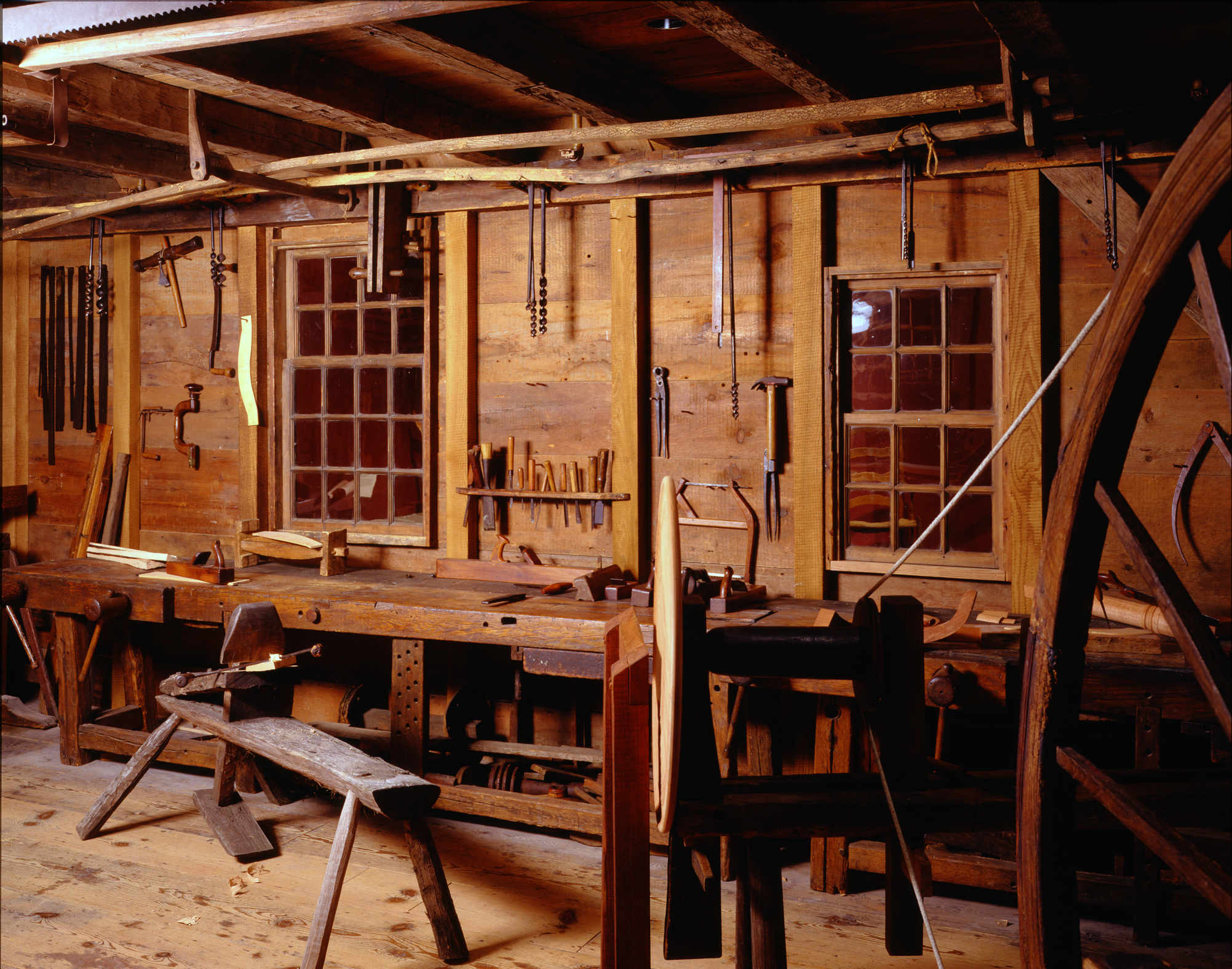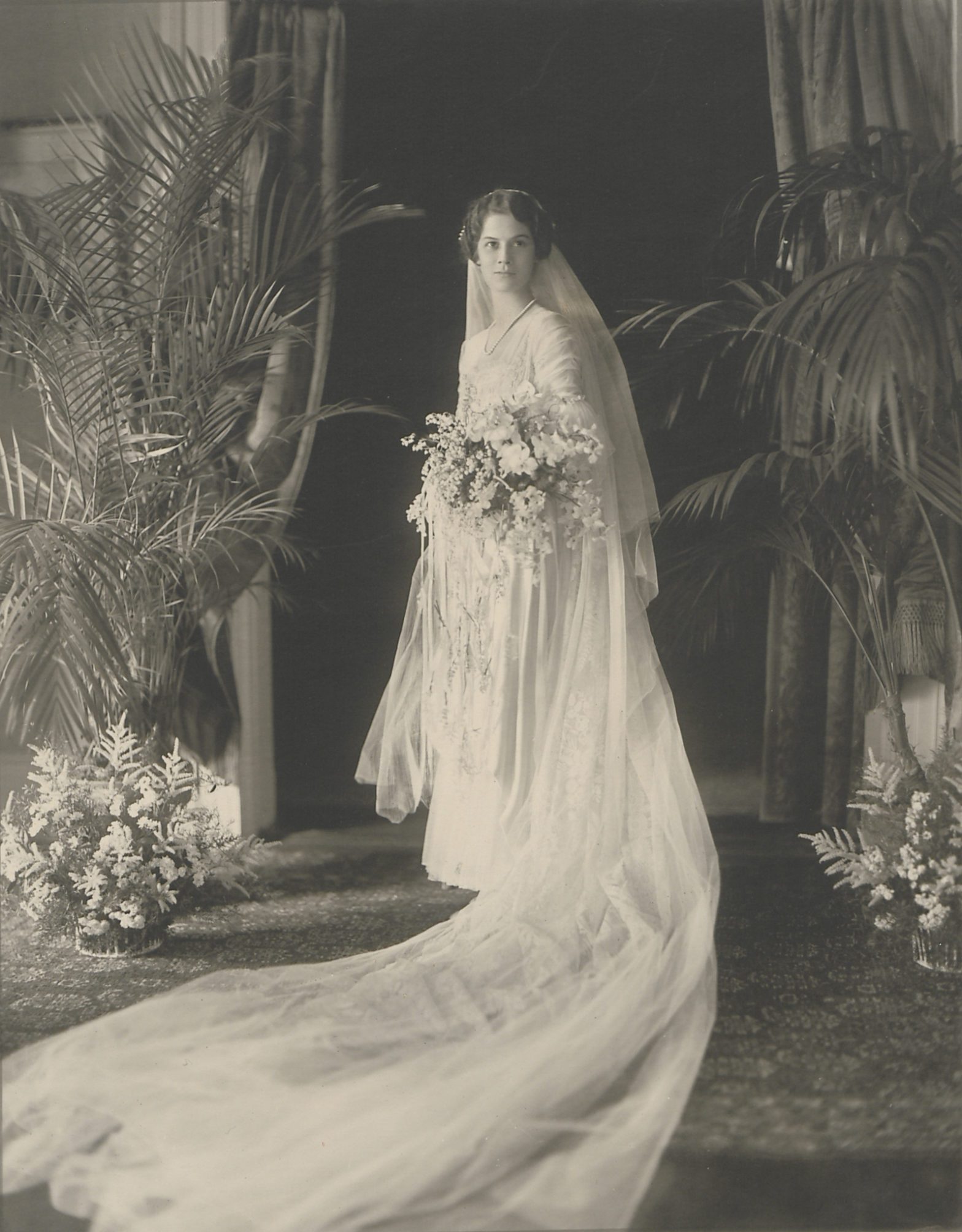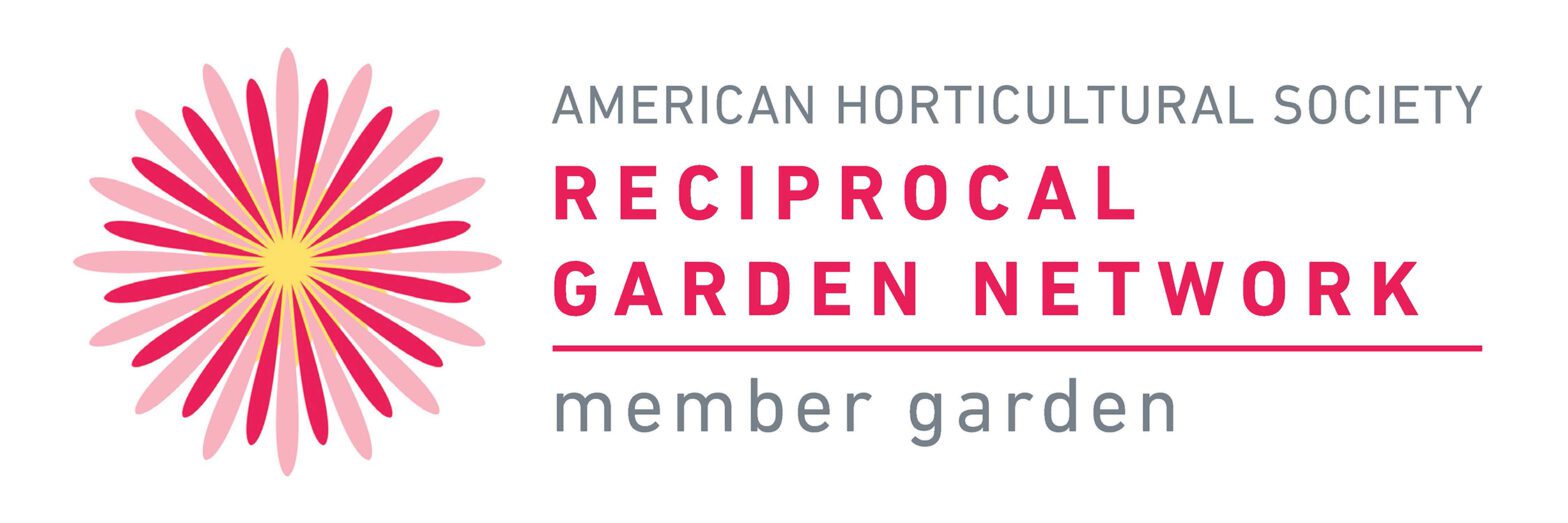Virtually experience the Winterthur Galleries display that was unveiled in November 2012 to honor the promised gift of an important collection of Chinese export porcelain. Wares made in the 1700s and 1800s for consumers in Britain, America, and Continental Europe are featured as well as porcelain for Indian and other Islamic markets.
Spode
Since Josiah Spode (1733–97) popularized blue printed pottery in the late 1700s, it has had a universal and lasting appeal that still resonates today. This interactive exhibition is a comprehensive resource for the study of Spode printed designs and their sources, focusing on the blue printed patterns of Spode c. 1784–1833, Spode family history and business, and life in the Staffordshire Potteries of that period.
The database allows users to search every known Spode pattern, many shapes and colored versions, and the source prints and original Chinese porcelain designs that served as inspiration. Of special note is an interactive version of Spode’s 1820 Shape Book. Visitors are able to virtually turn the pages of this rare document, of which only two copies are known.
The project was spearheaded by the Transferware Collectors Club in collaboration with Winterthur and The Potteries Museum & Art Gallery, Stoke-on-Trent, Staffordshire, England. It was funded by a generous donation from Klaus and Marcia Zeck and a research grant from the Transferware Collectors Club. Viewers are invited to submit new pattern versions and shapes to further enhance this groundbreaking exhibition.
Lasting Impressions
Sparked by the gift of an important collection of Currier & Ives prints to Winterthur, Lasting Impressions: the Artists of Currier & Ives highlights the contributions of Frances Bond Palmer and Arthur Fitzwilliam Tait, two of the most prolific artists who worked for this iconic publisher of Americana in the 19th-century. The exhibition was on display in the Winterthur Galleries from September 17, 2016 to January 8, 2017.
Who’s Your Daddy: Families in Early American Needlework
View a Web cast featuring retired curator Linda Eaton discussing many of the items from this exhibition, which was composed of Winterthur collection objects and was on view at Winterthur October 4, 2008, to August 17, 2009. A PDF of the gallery guide also offers an in-depth look at exhibition highlights.
Made for the Trade
Native Americans have been making objects to trade and sell to non-Native groups for hundreds of years. This exhibition features a selection of these objects from the Winterthur Collection including baskets, bowls, and even knitting sheathes. The exhibition was on display in the Winterthur Galleries from March 2011 to September 2012 and is now available digitally.
Winterthur Garden Internship Program
The Winterthur Garden Internship Program began in 1991 and is a continuation of H. F. du Pont’s educational background and lifetime of experience in horticulture, landscape design, and estate management. The program’s mission is to help educate the next generation of horticulturists and environmental stewards while preserving and maintaining the spectacular treasure that is the Winterthur Garden and estate.
Internships are available in the following areas:
- Arboriculture (1 position)
- Horticulture (4 positions)
- Natural Lands Stewardship (2 positions)
These internships are primarily summer internships, typically running from late May or early June through early-to-mid August (a duration of roughly three months). Exact start and end dates for all internships are flexible and will be worked out with the Internship Coordinator prior to each intern’s arrival.
All interns work a 35-hour week, 7:00 am–2:30 pm, Monday– Friday. They also have the option to work an additional five hours per week. Interns receive a wage of $15 an hour and qualify for free housing on the property.
Interns work closely with experienced staff, practice horticulturally and environmentally sound techniques, and learn to appreciate the history and design of Mr. du Pont’s beloved garden and estate. Interns also participate in a number of educational activities including weekly trainings and tours, plant identification classes, and field trips to public and private horticulture destinations in the greater Philadelphia region and also participate in Regional Intern Outreach Day, a workday and networking opportunity that brings together over a hundred interns from area gardens.
To apply for any of our internships, please send a letter of interest and résumé to: jobs@winterthur.org. Searches will continue beyond the deadline if suitable candidates have not been identified. (Please note: Winterthur is currently unable to consider applicants from countries outside the United States.)
Have a question about the Winterthur Garden Internship Program? Please contact the Internship Coordinator: Nicole Schmid, Administrative Assistant – Garden, Winterthur Museum, Garden & Library, 5105 Kennett Pike, Winterthur, DE 19735, 302.888.4779, nschmi@winterthur.org.
The Diligent Needle: Instrument of Profit, Pleasure, and Ornament
Needlework has historically been central to a young woman’s education. The Diligent Needle features the plain and fancy sewing of skilled young women. This exhibition was curated by Linda Eaton and was on view in the Winterthur Galleries from August 2014 to July 2015.
Dominy
The Dominy collections at Winterthur tell the story of three generations of craftsmen in East Hampton, New York between 1762 and 1852. The Dominy family made and repaired furniture, clocks, watches, and a wide variety of farm and household equipment for their family and neighbors. This extraordinary collection of tools and furniture, demonstrate craftwork and community at a time when Americans were finding their places as citizens of the new republic and participants in a young, dynamic, industrializing economy.
Mysteries and Implications: The Secrets of Ruth Wales du Pont’s Wedding Dress
From the start of planning for the current exhibition Winterthur’s Lady of the House: Ruth Wales du Pont, a central element was a re-creation of the dress she wore for her wedding in 1916. There was, however, one significant challenge: there was no dress to copy.
The only information about the dress was a description from The New York Times and two similar photographs. In each, Ruth’s bouquet obscures the waist and lower sleeves of her dress, and the drape of her long veil obscures the back.
Yet that was enough for Dr. Karin Bohleke, director of the Fashion Archives and Museum of Shippensburg University. Bohleke combined the information at hand with her knowledge of historic dressmaking techniques, a handful of period examples, and skills as a needleworker to replicate the gown. “I had to be a designer in a different way,” she says. For the project, Bohleke served partly as copyist, partly as historian.
Scrutinizing a high-resolution scan of one photo “millimeter by millimeter,” Bohleke discerned the details of the under veil—“something old” from her grandmother’s wedding in the 1850s—as well as the motifs in the border and center of cathedral-length overveil. She spent countless hours embroidering the patterns, with the “sprigs and sprays” between, onto a similar antique lace, constantly checking the length and drape of the material as she worked. “There are thousands of stitches in it,” Bohleke says.
After fashioning a headpiece of buckram covered with silk and flowers, she turned her attention to the dress. The photos clearly showed the sheer inverted V overskirt and an over-the-shoulder princess construction covered with net lace and beads. But the back and parts of the bodice were a mystery. Bohleke began to research examples from contemporaneous samples to determine that Mrs. du Pont’s dress likely featured elbow-length flounced arms, a pleated belt, and organza infills front and back.
As Bohleke began creating drafts and patterns for the sewing, she was surprised by a critical fact: Winterthur curators discovered that Ruth’s dress was made of a silver material.
“So here I had been thinking that she has this wonderful ivory, maybe silk-satin overskirt, and I was going to get some great bridal satin and really quality silk, and apparently Ruth sparkled and gleamed as she walked down the aisle in a silver gown,” Bohleke says.
Bohleke located hard-to-find quality silver material from G Street Fabrics in Washington, D.C., then painstakingly sewed and embroidered the dress, carefully concealing the bones of the bodice and all the many fasteners. She completed the work as it was mounted for exhibit in the West Galleries. “It was as close as I could be to the original,” she says.
Bohleke recently told attendees at a virtual lecture “Here Comes the Bride,” part of Winterthur’s Inspiring Design lecture series, that she was struck by several facts as she worked. First, the luxury length of the ensemble was provided by the veil, not by a train, as was fashionable at the time.
Further, the silver material was itself a luxury, with historical precedent established by royal brides in Europe. The fabric made a strong implication about the significance of her marriage to the wealthy Henry Francis du Pont. Both bride and groom came from socially prominent families.
“Also knowing what I know about the fashions of the day, what struck me the most is Ruth completely ignored the very comfy ankle-length or calf-length full skirt” that was popular at the time. “The skirt is out of date.”
Bohleke therefore believes that “because (high) society at that time period was so conservative, I think she had a lot of influences on her, perhaps her mother, perhaps other women in the family, social pressure, that actually made her opt for a conservative style.”
Bohleke also speculates that Ruth likely looked at the remains of her dress one day and “chucked it, quite literally, because there was nothing left to save.” Manufacturers of silk at the time treated fabrics with heavy metal salts to add weight, and those salts “more or less consumed the fabric,” she says. “The lining of the dress probably completely shattered.” And with silver’s tendency to tarnish, the fabric that did not flake away probably discolored horribly.
“That being said, she had an absolutely gorgeous dress,” Bohleke says.
And Winterthur has a stunning re-creation. See it in Winterthur’s Lady of the House: Ruth Wales du Pont.
Reciprocal Admissions
All Winterthur Members receive free admission and additional benefits when a valid Winterthur Membership card is presented at botanical gardens, arboreta, and conservatories that participate in the American Horticultural Society’s Reciprocal Admissions Program. Visit the AHS’s website to view hundreds of participating gardens in North America. Some restrictions may apply. Before visiting any garden, be sure to check that organization’s website and/or call to confirm participation in the AHS Reciprocal Admissions Program, hours of operation, zip code exclusions, and blackout dates.
Each card will admit only the person listed on the Member card. In the case of Family-level memberships, some gardens or museums may limit free or discounted admission to the named cardholder. You may be required to show a photo ID.
Contributor Level Members and Above Receive Even More
Winterthur is pleased to offer Contributor, Patron, Benefactor, and Friends of Winterthur Members access to more than 900 North American museums as part of the North American Reciprocal Museum Program (NARM) and Reciprocal Organization of Associated Museums (ROAM). As well as free admission, some participating organizations offer discounts at their museum shops and for concert/lecture tickets. Simply present your current Winterthur membership card with the black ROAM and NARM logo to receive free reciprocal admission to participating organizations. to receive free reciprocal admission to participating organizations.
Visit North American Reciprocal Museums and/or Reciprocal Organization of Associated Museums for lists of participating museums. Please note that some restrictions apply. Before visiting, be sure to take a look at the museum’s website and/or call to confirm the museum’s participation in NARM or ROAM, their hours of operation, and any zip code restrictions or blackout dates/programs.
Zip Code Exclusions and Reciprocal Admissions
If you are visiting Winterthur as a member of a reciprocal organization, please note that the AHS website does explicitly say that our 90-mile exclusion is enforced. And, a 15-mile/25-mile exclusion is enforced for organizations belonging to NARM or ROAM. This means that if the American Horticultural Society organization you belong to is located 90 miles (or less) from Winterthur, we will not honor reciprocity. NARM organizations within 15 miles and ROAM organizations within 25 miles of Winterthur are excluded from receiving reciprocal admission at Winterthur. For example, NARM and ROAM reciprocal privileges do not extend between Winterthur and the following local museums due to zip code restrictions: Hagley Museum and Library, Delaware Art Museum, The Delaware Contemporary (DE), Brandywine Museum of Art (PA), Pennsylvania Academy of Fine Arts (PA), and The University of Pennsylvania Museum of Archaeology and Anthropology (PA).
Calculate distance from the organization you belong to and Winterthur using Google maps. If your membership is directly with AHS, calculate distance from Winterthur using your home address. Thank you for understanding! In addition to zip code exclusions, some special events and programs are reserved for Winterthur Members or paying guests. This means that reciprocity for AHS, NARM, or ROAM members will not be available on these program days. During Yuletide at Winterthur and the annual summer Artisan Market, all reciprocal admissions are blacked out. Thank you for understanding!
